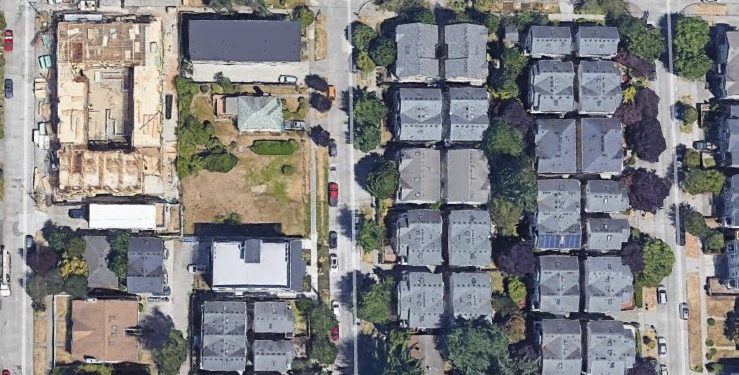by David Baumgarten

Let’s focus on a City of Seattle scenario I have recently run across that you need to keep an eye out for when evaluating a Site, like before you buy it. There is a little item that can really affect development at a site called “No Off-Site Point of Discharge”.
You find a single-family home on a nice lot and are evaluating buying the home, tearing the home down and building a new home or maybe a remodel with an addition and the lot has “No Off-Site Point of Discharge” for stormwater. No storm line to connect to in the street and you are more than 250 feet from a catch basin. And I mean if you are, say, 252 feet from a catch basin, that should be close enough, right?… Nope, been through that one, 250 feet is 250 feet, no wiggle room. Ok, so you can just infiltrate all of your stormwater. Let’s sure hope so. If not? Then you will only be allowed to have the same impervious surface area in the current home/lot configuration under the redeveloped conditions.
I have one of these in the hopper right now. The gentleman purchased the home and was renting it out to tenants as he planned for a complete tear-down to construct a single-family residence. He had worked with an architect and had all the plans for the new, much larger, home. I get a call that he needs to complete a City of Seattle Small Pilot Infiltration Test (PIT) to evaluate infiltration… and… he has no off-site point of discharge.
In this case, the client was going to have his landscapers excavate the test pit to run the PIT test by hand. Ok, that’s a minimum 3 foot by 4 foot by up to 4-foot-deep test pit, limited to four feet deep if dug by hand. I suggest we go out and complete a few hand augers so we can give direction to his crew on how deep to dig the pit. City of Seattle residential sites need to have at least one foot of separation from the base of the infiltration trench/drywell to a restrictive layer or groundwater. We did not want the crew to say dig down 4 feet and only find that the last foot was a real tough digging and they had to use pry bars and picks to get through the glacial till (restrictive layer) they hit at 3 feet deep. So, we hand auger. For the first-hand auger, there was glacial till at 1.5 feet, second-hand auger glacial till at 1.5 feet, third-hand auger glacial till at 2.5 feet. Now what? Remember the bottom of the infiltration facility needs to be at least one foot above the restrictive layer. I sent the soil logs to his engineer and am waiting to hear back. But this will likely greatly impact what happens to the Site, he may be only allowed to replace the home with a home and driveway with the same total impervious area as the existing lot is developed with currently. Ouch!
You can “extend” a stormwater line to your property frontage from the existing system, but that may be several blocks away. Given the cost to install that extension in the city streets, I have never seen it done.

